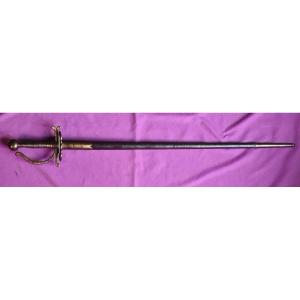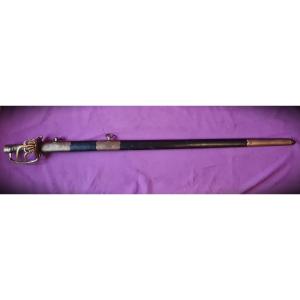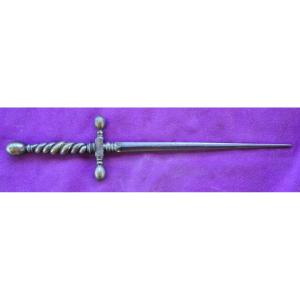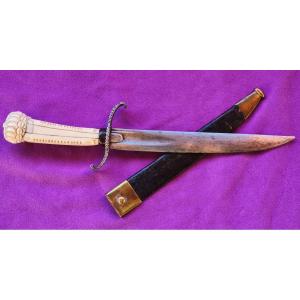Due to its archaic style, we can date this weapon as probably the second half of the 17th century, with the re-use of an older Western blade.
BLADE: it is an old European blade, made in Passau or Solingen in the 16th century. It is flexible, has a single edge and has 2 grooves. On the external face, in one of the grooves, we find the "XXXXX" cross marks typical of Germanic blades from the 16th century.
On the other side, we can see the remains of the same marks.
A counter cutting edge is present on the last 24 cm near the tip.
Length of the blade 96 cm, Width at the heel, 3.4 cm, thickness near the guard 7.2 mm
MOUNT : The hilt is Khanda type. it forms a basket whose pommel is extended by a long rod which allows the weapon to be hold with 2 hands.
We note a small old repair by welding at the level of the inner side guard plate. The guard is connected to "splint" parts which double the blade over its first 10 cm by chiseled steel stirrups.
This type of weapon is typical of exchanges between India and the West. Old European blades were sold in the 17th and 18th century by merchants, often Portuguese, in the Goa region and then reassembled locally according to Indian fashion.
The unusual length of the blade brings additional interest to this weapon.
A weapon of almost identical geometry, but with a richer mount, is represented in Cameron Stone's book, p.227, Fig.283 / 3
Ref A2Y-2446
Shipping costs France €30, Europe €40

















































 Le Magazine de PROANTIC
Le Magazine de PROANTIC TRÉSORS Magazine
TRÉSORS Magazine Rivista Artiquariato
Rivista Artiquariato